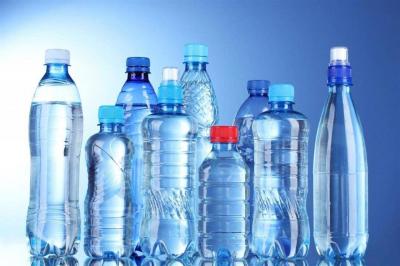Most people use plastic water bottles of various types and sizes believing they are safer and healthier, especially for convenience during events. However, recent revelations might be shocking enough to make you reconsider using them. A recent study found that a water bottle can contain a quarter of a million pieces of plastic. Scientists discovered a new category of pollution called nanoplastics, which are created as microplastics further break down.
A technique developed by Columbia University showed that the actual amount of plastic particles floating in water is 100 times more than previously thought when including nanoplastic particles, according to a report published by the British newspaper "Telegraph."
In detail, scientists targeted seven common types of plastic polymer and used lasers to reveal the mass and quantity of nanoplastics in a volume of water. The study revealed that one common plastic is PET, also known as polyethylene terephthalate, the same material used to make plastic bottles. The actual amount of plastic in water could be much higher than found in the study, as the team states that the seven types of plastics represent only about 10% of all existing plastics. They warn that the true extent of water pollution could be millions of nanoplastic particles per liter.
Additionally, scientists found that microplastics still cause more water pollution than smaller particles in terms of weight, but the massive number of tiny shards is concerning in itself. It's noted that the health effects of plastic pollution in food and beverages remain relatively unknown and difficult to study, but plastics have been found in organ tissues, bloodstream, and tissues of plants and animals that we consume.
The small particles can seep more freely through the intestines and blood vessels, allowing them to spread deeper into the body and various tissues, including the brain, where they could potentially cause more harm. Previously, it was impossible to know the number of particles smaller than one micron, which is one-seventieth the width of a human hair, present in the water due to analytical limitations.
Data suggests that a standard liter of water contains 240,000 detectable plastic pieces, potentially reaching 370,000 pieces. Nine out of ten plastics are nanoplastics, thus smaller than one micrometer, or a micron, which is one-millionth of a meter, or 1/25,000 of an inch.




